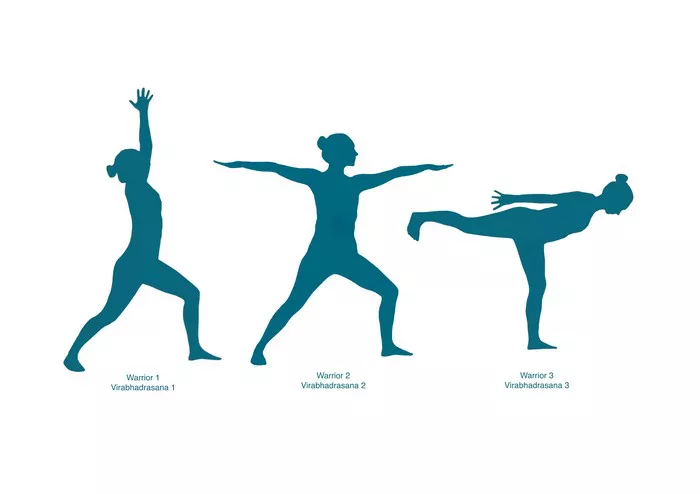Ashtanga Yoga, often referred to as the “eight-limbed yoga,” is a comprehensive system that encompasses various aspects of yoga practice, including meditation. Developed by the ancient sage Patanjali in his Yoga Sutras, Ashtanga Yoga provides a structured path towards self-realization and inner peace. In this article, we delve into the intricacies of Ashtanga Yoga meditation, exploring its techniques, philosophy, and practical applications.
The Eight Limbs of Ashtanga Yoga
Before delving into Ashtanga Yoga meditation, it’s essential to understand its foundational framework: the eight limbs. These limbs serve as a guide for practitioners seeking spiritual growth and self-awareness. They are:
1. Yama: Ethical guidelines governing one’s behavior towards others, including principles such as non-violence (ahimsa), truthfulness (satya), and non-greed (aparigraha).
2. Niyama: Personal observances focused on self-discipline and inner purification, including practices like cleanliness (shaucha), contentment (santosha), and self-study (svadhyaya).
3. Asana: Physical postures designed to cultivate strength, flexibility, and balance in the body. Asanas prepare the practitioner for meditation by promoting physical health and mental clarity.
4. Pranayama: Breath control techniques aimed at regulating the flow of prana (life force energy) in the body. Pranayama practices enhance respiratory efficiency and facilitate concentration.
5. Pratyahara: Withdrawal of the senses from external stimuli, allowing the practitioner to turn their focus inward. Pratyahara prepares the mind for meditation by reducing distractions and promoting introspection.
6. Dharana: Concentration or single-pointed focus, where the practitioner directs their attention to a specific object or concept. Dharana cultivates mental discipline and prepares the mind for deeper states of meditation.
7. Dhyana: Meditation, the uninterrupted flow of awareness towards the chosen object of focus. In Dhyana, the practitioner experiences a state of expanded consciousness and inner tranquility.
8. Samadhi: The ultimate goal of yoga, often described as a state of spiritual absorption or union with the divine. Samadhi transcends the limitations of the individual self, leading to profound insights and liberation.
Ashtanga Yoga Meditation Techniques
In Ashtanga Yoga, meditation is an integral part of the practice, seamlessly woven into the fabric of daily life. While there are various meditation techniques employed within the system, some of the most common ones include:
1. Breath Awareness (Anapanasati): This technique involves observing the natural rhythm of the breath without attempting to control it. By anchoring the mind to the breath, practitioners develop mindfulness and cultivate present-moment awareness.
2. Trataka (Candle Gazing): In this practice, the practitioner focuses their gaze on a candle flame placed at eye level. By concentrating on the flame, the mind becomes still, and internal distractions dissolve, leading to a state of deep meditation.
3. Mantra Meditation: Mantra meditation involves the repetition of a sacred word or phrase (mantra) to quiet the mind and invoke a sense of peace and clarity. Popular mantras include “Om,” “So-Ham,” and “Aham Brahmasmi.”
4. Visualization (Yantra Meditation): This technique involves visualizing intricate geometric shapes or symbolic images (yantras) to stimulate the mind and awaken higher states of consciousness. Yantra meditation is often practiced with the eyes closed, allowing the inner vision to unfold.
5. Loving-Kindness (Metta) Meditation: Metta meditation involves cultivating feelings of love, compassion, and goodwill towards oneself and others. By radiating positive intentions, practitioners dissolve barriers of separation and connect with the inherent unity of all beings.
6. Silent Witnessing (Vipassana): Vipassana meditation involves observing the arising and passing away of thoughts, emotions, and sensations with detached awareness. By developing equanimity towards inner experiences, practitioners gain insight into the impermanent nature of reality.
Philosophy of Ashtanga Yoga Meditation
Central to Ashtanga Yoga meditation is the philosophy of self-realization and spiritual evolution. Practitioners aim to transcend the limitations of the ego and connect with their true nature, which is characterized by pure awareness and boundless consciousness. This journey towards self-discovery unfolds through diligent practice and unwavering dedication to the path of yoga.
The concept of “sadhana” (spiritual practice) holds significant importance in Ashtanga Yoga. Sadhana encompasses a wide range of activities, including meditation, asana practice, self-reflection, and service to others. Through consistent sadhana, practitioners purify the mind, cultivate virtues, and align themselves with the higher purpose of life.
Ashtanga Yoga meditation also emphasizes the role of the guru (spiritual teacher) in guiding the aspirant along the path. The guru serves as a beacon of light, offering wisdom, support, and inspiration to the disciple on their journey towards self-realization. The relationship between the guru and disciple is based on trust, humility, and surrender, facilitating the transmission of spiritual knowledge and blessings.
Practical Applications of Ashtanga Yoga Meditation
Beyond the confines of the yoga mat, Ashtanga Yoga meditation offers numerous practical applications for daily life. By cultivating mindfulness and inner peace, practitioners navigate life’s challenges with grace, resilience, and equanimity. Some of the practical benefits of Ashtanga Yoga meditation include:
1. Stress Reduction: Regular meditation practice helps reduce stress levels by promoting relaxation and calming the nervous system. By fostering a sense of inner tranquility, practitioners navigate stressful situations with greater ease and clarity of mind.
2. Enhanced Concentration: Through the practice of Dharana and Dhyana, practitioners develop heightened concentration and mental focus. This enhanced cognitive function translates into improved productivity, creativity, and efficiency in various aspects of life.
3. Emotional Well-being: Ashtanga Yoga meditation fosters emotional balance and resilience by cultivating self-awareness and self-regulation. Practitioners learn to observe their thoughts and emotions without attachment, thereby reducing reactivity and promoting emotional intelligence.
4. Spiritual Growth: Ultimately, Ashtanga Yoga meditation serves as a vehicle for spiritual growth and self-realization. By delving into the depths of consciousness, practitioners awaken to the timeless wisdom and eternal truths that lie beyond the realm of the ego.
Conclusion
Ashtanga Yoga meditation offers a profound path towards self-discovery, inner peace, and spiritual awakening. Through the practice of meditation, practitioners embark on a transformative journey of self-realization, leading to a deeper understanding of the self and the universe. By integrating the principles and practices of Ashtanga Yoga into daily life, individuals cultivate a harmonious balance between body, mind, and spirit, ultimately leading to a life of fulfillment, purpose, and joy.
























